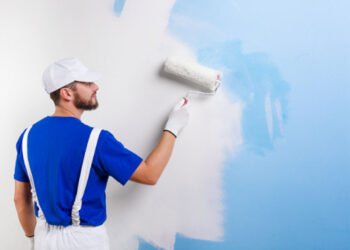Have you ever wondered if your home is truly protected against unexpected issues? From weather-related damage to wear and tear over time, there are many factors that can affect the safety and stability of your home. Taking proactive steps to protect your property can give you peace of mind and prevent costly repairs down the line.
In this blog, we will share practical tips to keep your home safe and sound, helping you maintain a secure and comfortable living space.
Start with Regular Maintenance
Regular home maintenance is key to catching potential problems early. Begin by inspecting critical areas like your foundation, roof, and exterior walls. Look for signs of cracks, leaks, or damage, as these issues can worsen over time if left unchecked. Clean gutters and downspouts regularly to prevent water buildup, which can lead to leaks or structural damage.
Pay attention to indoor maintenance as well. Check for signs of mold, water stains, or pest activity. Replace air filters in your HVAC system, test smoke detectors, and inspect plumbing for any leaks or corrosion. These small but consistent efforts can keep your home running smoothly and prevent larger problems.
Protect Your Roof
Your roof is one of the most important parts of your home. It shields your property from the elements and helps maintain structural integrity. Over time, roofs can deteriorate due to weather exposure, age, or improper installation. Regularly inspecting your roof for missing shingles, cracks, or other visible damage can help you spot problems before they escalate.
If you notice significant wear or damage, it may be time to contact a trusted roof replacement company. Professionals can evaluate the condition of your roof and recommend the best course of action. Investing in a high-quality replacement not only enhances your home’s safety but also adds value to your property. A sturdy roof protects your family and belongings while preventing more extensive repairs in the future.
Working with a reputable company ensures that the job is done efficiently and with durable materials. This helps you maintain a secure, long-lasting roof that keeps your home safe from the elements.
Upgrade Your Security Measures
Home security is another crucial aspect of keeping your home safe. Start by upgrading locks on doors and windows. Deadbolts, smart locks, and reinforced hardware can provide an extra layer of protection. For added convenience, consider installing smart security systems that allow you to monitor your property remotely through your phone.
Outdoor lighting is also important for deterring intruders. Motion-sensor lights around entry points and pathways can make your home less attractive to potential threats. If you don’t already have them, consider installing security cameras to monitor activity around your property. Visible cameras are a proven deterrent and can provide valuable evidence if an incident occurs.
Prepare for Weather Events
Weather-related damage is a common concern for homeowners. From storms to heavy snowfall, extreme conditions can take a toll on your property. Start by reinforcing vulnerable areas like windows and doors. Storm shutters or impact-resistant glass can protect against strong winds and flying debris. Ensure that your home’s drainage system is working properly to prevent flooding during heavy rains.
Create an emergency kit with essentials like flashlights, batteries, non-perishable food, and water. This will help you stay prepared for power outages or other disruptions. Knowing the risks in your area, such as hurricanes, tornadoes, or extreme cold, can guide you in taking the right precautions to protect your home and family.
Keep Your Systems in Check
The systems in your home, such as plumbing, electrical, and heating, play a major role in keeping it safe and functional. Regularly inspect and maintain these systems to avoid problems like leaks, short circuits, or breakdowns. For plumbing, watch for dripping faucets, slow drains, or water stains, as these could indicate hidden issues.
For electrical systems, check for flickering lights, tripped breakers, or outdated wiring. These signs might point to potential hazards that need professional attention. Scheduling routine inspections with qualified technicians can help identify and resolve issues before they become emergencies.
Don’t Forget Your Foundation
The foundation is literally what your home stands on, so it’s vital to keep it in good condition. Walk around your home and look for signs of cracks or uneven floors, as these could indicate foundation problems. Water pooling near the base of your home could also lead to damage over time, so make sure your drainage system directs water away from your property.
If you suspect foundation issues, consult a professional who can assess the situation and recommend the best solution. Taking care of your foundation is essential for maintaining the stability and longevity of your home.
Create a Routine for Long-Term Care
Keeping your home safe and sound isn’t a one-time effort—it’s an ongoing process. Create a routine for regular inspections and maintenance tasks. Setting reminders for seasonal checks, such as cleaning gutters in the fall or inspecting your roof in the spring, can help you stay on top of these responsibilities.
In addition, keep a record of maintenance and repairs. This can be helpful if you ever decide to sell your home, as it shows buyers that the property has been well cared for. Regular care not only enhances your home’s safety but also contributes to its long-term value.
In a nutshell, a safe and sound home provides comfort and peace of mind for you and your family. By staying proactive with maintenance, protecting your roof, upgrading security, and preparing for weather events, you can create a secure living space. What steps will you take today to make your home a safer place for the future?












